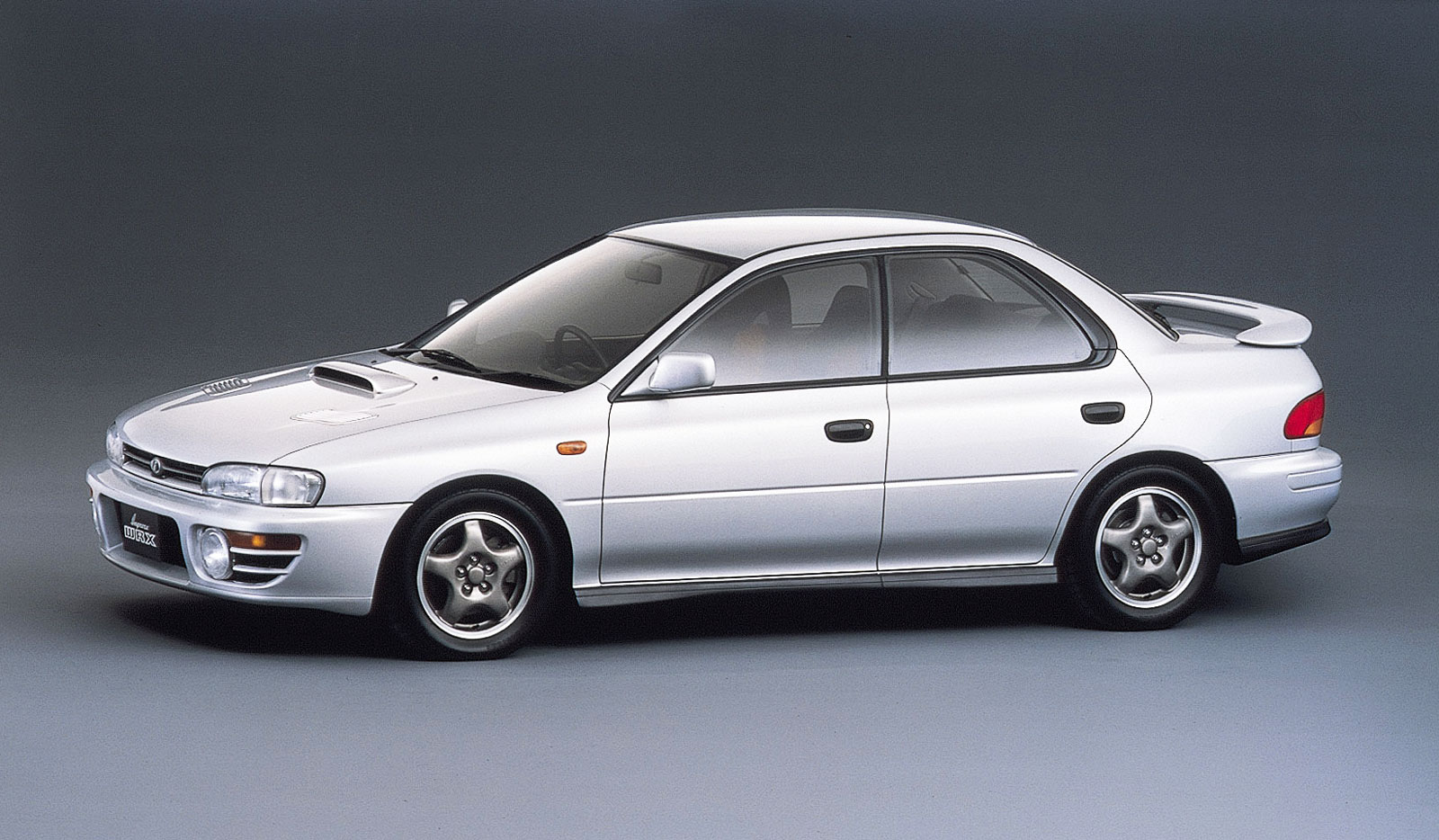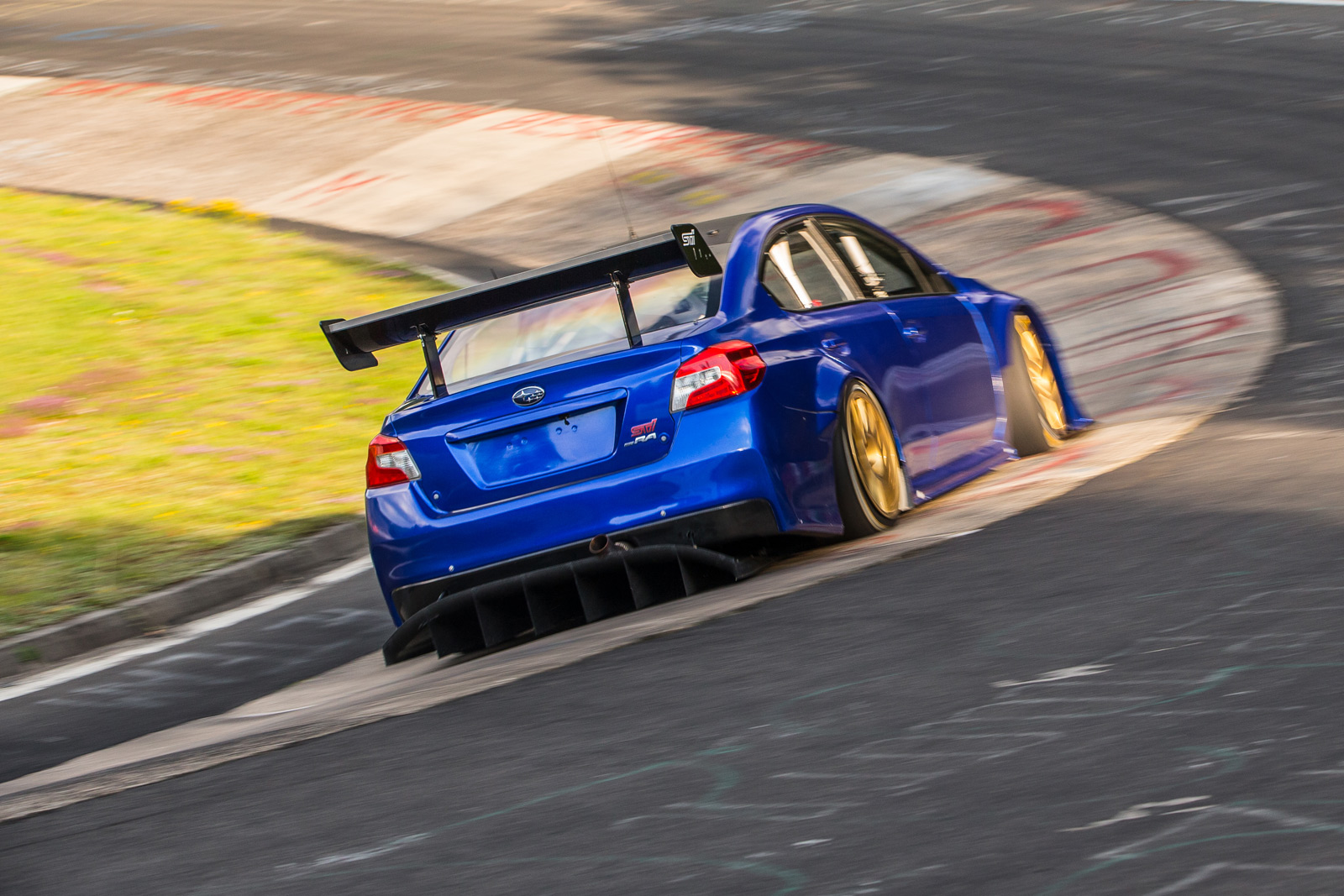Translated from Japanese so some words don't make sense but interesting piece all the same
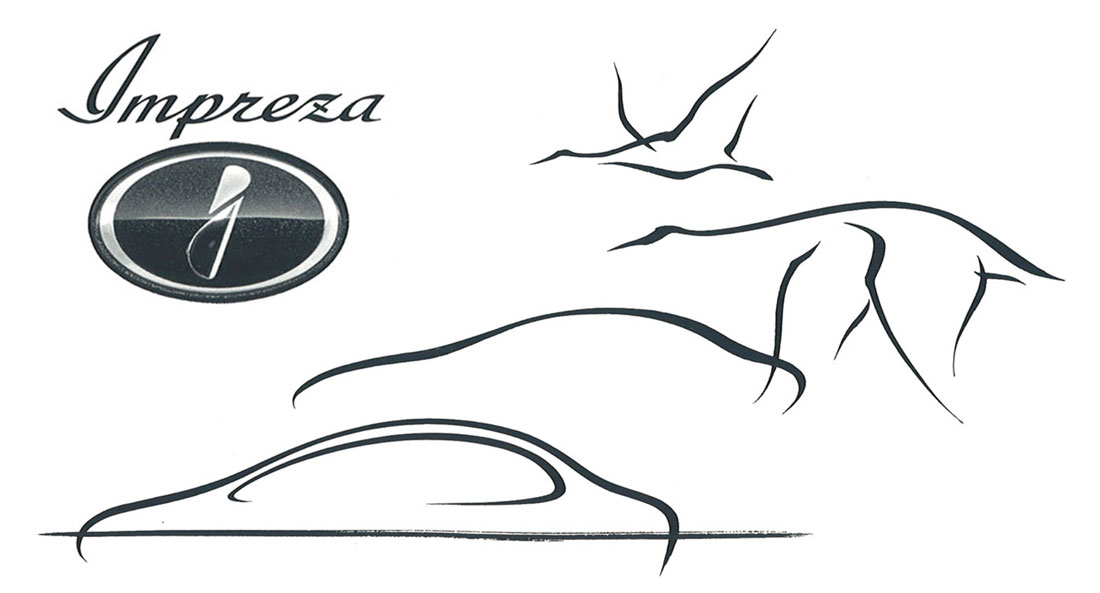
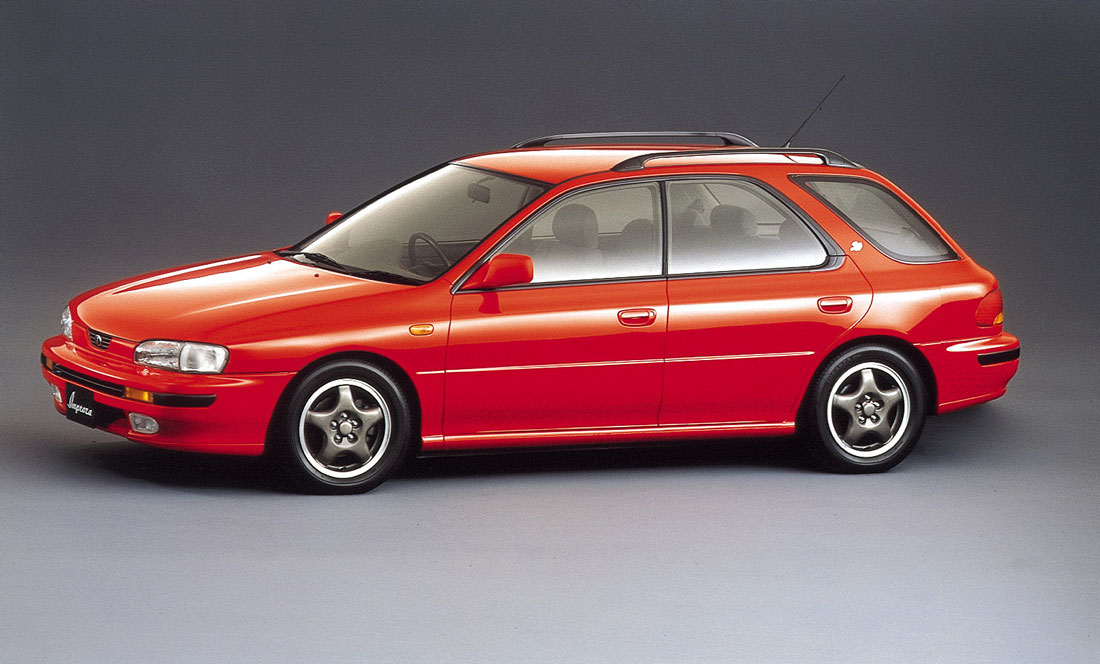
The birth of the Impreza.
Born as a younger brother of the Legacy, the Impreza now supports the backbone. There were twists and turns in the birth of the Impreza. If the environment in which Fuji Heavy Industries was located had changed, a completely different Impreza might have been born.

In 1980, the difference between Rex and Leone's vehicle class was quite wide.

If you think about it now, Subaru is the least Subaru in the history of Subaru.
Birth of the intermediate model "Justy".
Justy was born in response to the voice that there was too much space between light and small cars. Kyoji Takenaka (former president of Fuji Heavy Industries), who was planning the product at that time, said:
"Whether to approach from Leone's horizontally-opposed engine or a mini car. There were two options. However, it is quite difficult to lower the model with intermediate displacement, which is highly price- and cost-competitive. I myself was in charge of mini cars, so I thought it would be a good idea to start from the bottom up. "
Justy was designed based on Rex, as Takenaka thought. The in-line engine transverse FF and door are the same as Rex, and it was thought that it could be made with the equipment that produces Rex.
Straight-four complex.

The EJ15 engine that was published in the public relations materials of the first Impreza.
At that time, there was a debate about whether Subaru would continue the horizontally-opposed engine or not.
At that time, the advantage over in-line engines was lost, and some were inferior to straight-four engines. Hideshige Gomi says:
"Speaking of straight-four, it's like competition between automobile manufacturers, but it's actually like joint development. Even if the technology isn't in-house, you can share knowledge and experiments by researching other companies. That's why technological development is progressing steadily. However, since only a limited number of companies are adopting horizontally opposed, the development burden is heavy. Due to such pain, the development speed slows down, and technical (with straight 4) There was a gap. "
20 years from Subaru 1000. Subaru was supposed to have up to 4 straight-four complexes.
The intermediate model is straight 4.
It was justy that was recognized in the market, but when the post Leone is decided to be 2,000cc class, there is a growing voice that an intermediate model of the popular car class is necessary. In terms of management, development will start because it is necessary to increase the number of models and develop stable products.
For the 1.5L class, there is one big market internationally, so there was a need for a competitive one. The idea that was born here was "a car that emphasizes commonality." Takenaka talks.
"Therefore, a global engine called the transverse straight-four engine emerged. By combining a high-community engine with a CVT, which is a transmission that will lead the new era, it is not possible to create an intermediate-class car with strong product appeal. I came to the conclusion. "
Eventually, it was decided that the chassis would also be expanded and strengthened based on Justy.
Double punch that hit Subaru.
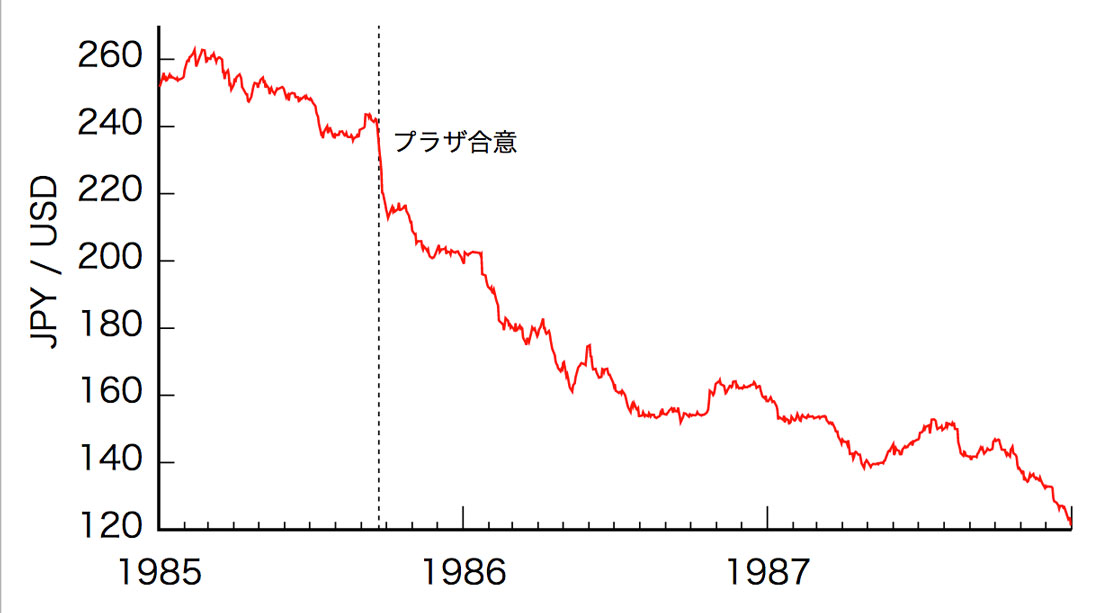
Since the Plaza Accord, the yen has strengthened sharply. This is a complete deficit for domestic production.
Since the second oil crisis in 1979, fuel-efficient Japanese cars have become popular in the United States. Subaru's exports increased from 103,000 in 1978 to 142,000 in 1980. On the other hand, sales of Big Three dropped sharply. The layoff of 310,000 people (July 1980) has had a major impact on the US economy, and voluntary export restraints will begin at the strong request of President Reagan.
It was the Plaza Accord in 1985 that put a ring on that. Developed countries agree on a coordinated depreciation of the dollar. The sharp rise in the yen-dollar exchange rate (240 yen / dollar → 140 yen / dollar) made it an urgent task to establish a local production system. At that time, the profit structure of the automobile sector, which depended on foreign countries for half of its sales and whose 80% was denominated in dollars, was inevitably damaged by foreign exchange losses. As it sells out in North America, SOA has a $ 30 million deficit in 1987.
Takenaka, please forgive me.

A local production plant built in 1987 in collaboration with Subaru of Indiana and Isuzu.
Under these circumstances, plans for intermediate models have progressed, and a prototype vehicle was completed in 1988, when Gomi was in charge. It is said that he was running on the test course with the specification that the in-line 4-cylinder DOHC 4-valve 1600cc was placed horizontally and equipped with CVT.
Around this time, Takenaka was called by President Toshihiro Tajima and was cut out like this. "Takenaka-kun, please forgive me." Local production in North America under the Plaza Accord became an urgent task, and a management decision was made to use the 80 billion yen required for intermediate models to establish SIA.
In addition to the damage caused by the slump in North America, we didn't have much money to pay for the Legacy, investing in a new engine for expanding the number of mini vehicles (660cc), and constructing the SKC (Subaru Research Center).
There was no room to put it in the middle model anymore.
If the horizontal opposition continues, the company will collapse! Straight-four! !! If it doesn't work, it's a strike! !!

Eh! Strike for straight-four conversion! ?? At the end, Mr. Subaru and Momose persuaded him.
Gomi explained to the project members as a president's order. The moment I told him to stop straight-four and go horizontally, I got a fierce counterattack from the project members. In addition to being kangaroo court for half a day, some people take a break from the company.
It was Ken Ito, who is known as Impreza's father, who was suddenly introduced by Gomi. Start by motivating everyone by showing the depressed members a one-fifth layout diagram that they have put together.
We invited Momose, who had already retired and was an auditer, and Mitsuo Takahashi, the development manager of the third generation Leone, to learn about points to pay attention to and development know-how. Momose is said to have supported the project team by giving advice on the design work process and explaining interior ideas in watercolor.
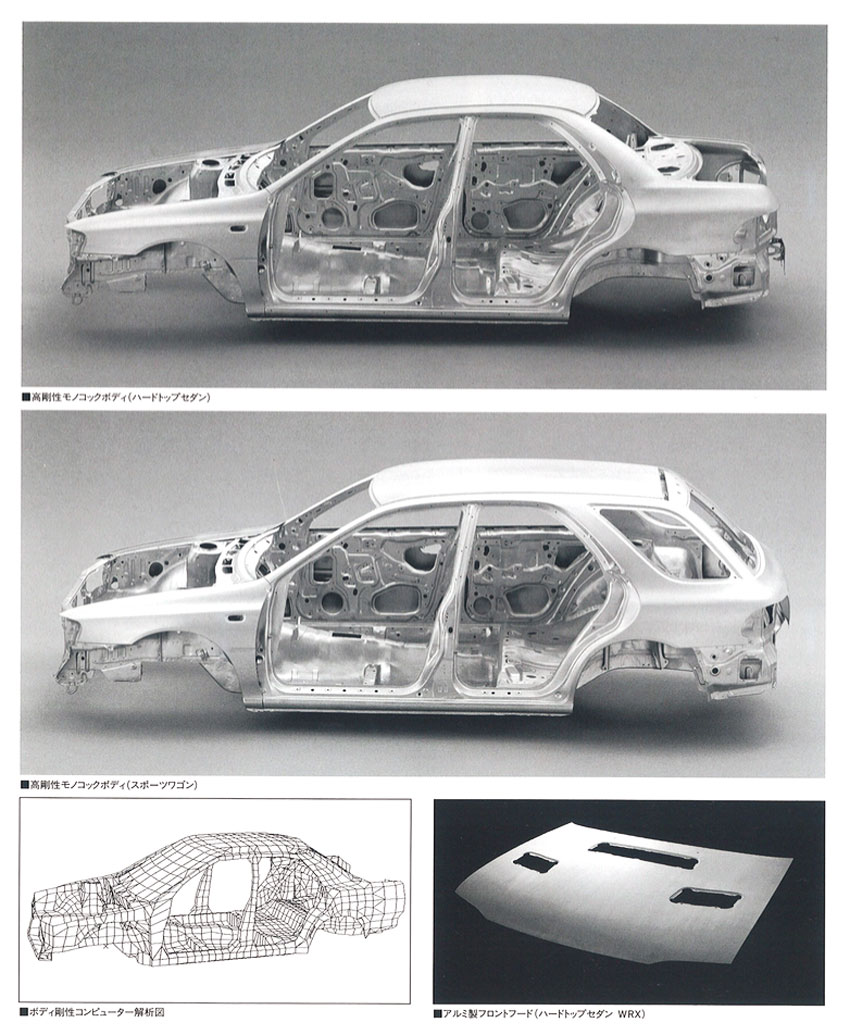
The Impreza's white body is 28kg lighter than the original Legacy.
I don't make the same thing as the Legacy.
The members who are suddenly motivated will focus on how to make a lightweight and compact car while using Legacy components.
As for the suspension, the subframe was shared with the Legacy for each floor, and the walls they had to overcome were high.
However, their motivation was high, and the leader of chassis design declared, "I will never make the same thing as the Legacy! I will make something lighter and better performance" and developed an aluminum transverse link for WRX. did.
Also, body design leaders are not always saying, "Make the lightest body in the world." As shown on the right, we will finally realize a body that is more than 10% lighter than the Legacy and lighter than the Leone.
Design without waste.
Rounded proportions with rounded corners that characterize the Impreza.
It is said that Mamoru Konida of the Vehicle Research and Experiment Department made a request to Hidefumi Kato, the chief of design, to design a design that "does not carry a wasteful space", which led to this design.
In addition, the review of the project was an opportunity to create a new type of wagon. It is a sports wagon with the same overall length as a sedan. Development was advanced because it was possible to increase the variation while suppressing investment.
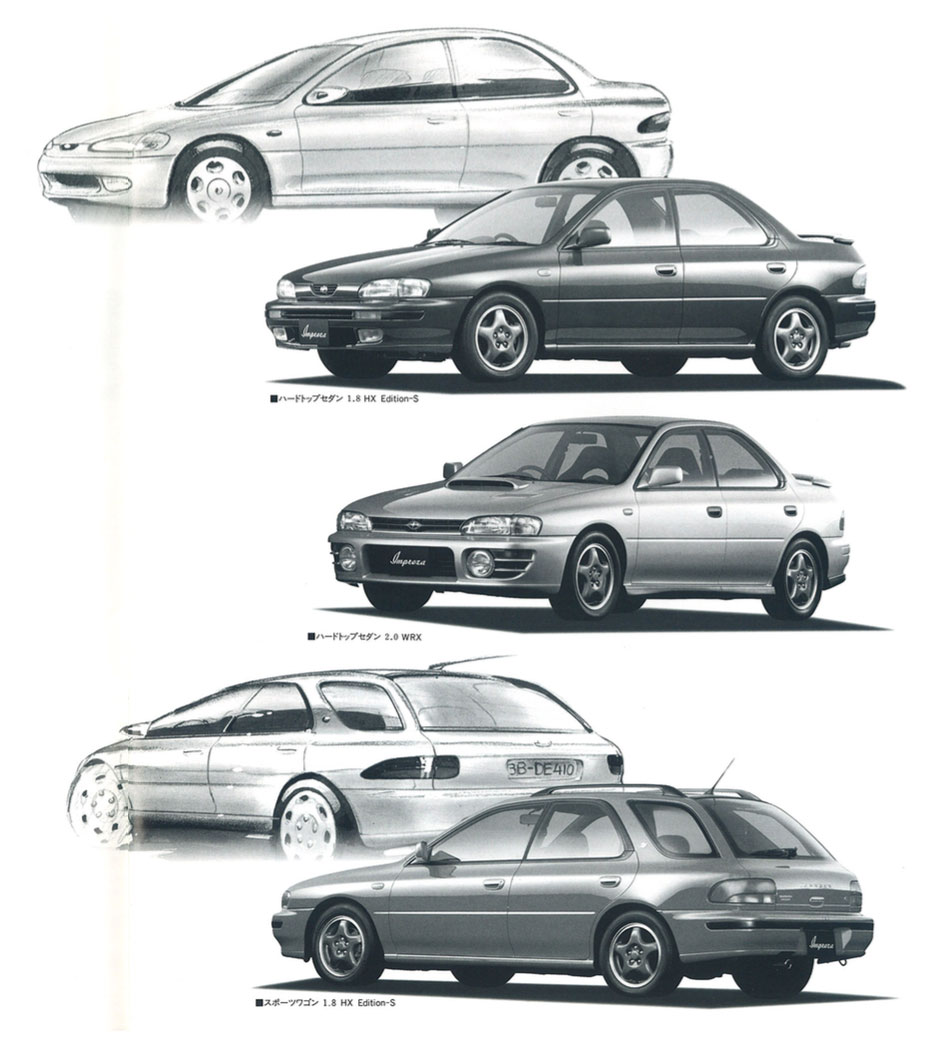
Birth of Impreza-Subaru chose to face horizontally in the midst of a business crisis. ~
Brush: Club Subarism Okada

The birth of the Impreza.
Born as a younger brother of the Legacy, the Impreza now supports the backbone. There were twists and turns in the birth of the Impreza. If the environment in which Fuji Heavy Industries was located had changed, a completely different Impreza might have been born.

In 1980, the difference between Rex and Leone's vehicle class was quite wide.

If you think about it now, Subaru is the least Subaru in the history of Subaru.
Birth of the intermediate model "Justy".
Justy was born in response to the voice that there was too much space between light and small cars. Kyoji Takenaka (former president of Fuji Heavy Industries), who was planning the product at that time, said:
"Whether to approach from Leone's horizontally-opposed engine or a mini car. There were two options. However, it is quite difficult to lower the model with intermediate displacement, which is highly price- and cost-competitive. I myself was in charge of mini cars, so I thought it would be a good idea to start from the bottom up. "
Justy was designed based on Rex, as Takenaka thought. The in-line engine transverse FF and door are the same as Rex, and it was thought that it could be made with the equipment that produces Rex.
Straight-four complex.

The EJ15 engine that was published in the public relations materials of the first Impreza.
At that time, there was a debate about whether Subaru would continue the horizontally-opposed engine or not.
At that time, the advantage over in-line engines was lost, and some were inferior to straight-four engines. Hideshige Gomi says:
"Speaking of straight-four, it's like competition between automobile manufacturers, but it's actually like joint development. Even if the technology isn't in-house, you can share knowledge and experiments by researching other companies. That's why technological development is progressing steadily. However, since only a limited number of companies are adopting horizontally opposed, the development burden is heavy. Due to such pain, the development speed slows down, and technical (with straight 4) There was a gap. "
20 years from Subaru 1000. Subaru was supposed to have up to 4 straight-four complexes.
The intermediate model is straight 4.
It was justy that was recognized in the market, but when the post Leone is decided to be 2,000cc class, there is a growing voice that an intermediate model of the popular car class is necessary. In terms of management, development will start because it is necessary to increase the number of models and develop stable products.
For the 1.5L class, there is one big market internationally, so there was a need for a competitive one. The idea that was born here was "a car that emphasizes commonality." Takenaka talks.
"Therefore, a global engine called the transverse straight-four engine emerged. By combining a high-community engine with a CVT, which is a transmission that will lead the new era, it is not possible to create an intermediate-class car with strong product appeal. I came to the conclusion. "
Eventually, it was decided that the chassis would also be expanded and strengthened based on Justy.
Double punch that hit Subaru.

Since the Plaza Accord, the yen has strengthened sharply. This is a complete deficit for domestic production.
Since the second oil crisis in 1979, fuel-efficient Japanese cars have become popular in the United States. Subaru's exports increased from 103,000 in 1978 to 142,000 in 1980. On the other hand, sales of Big Three dropped sharply. The layoff of 310,000 people (July 1980) has had a major impact on the US economy, and voluntary export restraints will begin at the strong request of President Reagan.
It was the Plaza Accord in 1985 that put a ring on that. Developed countries agree on a coordinated depreciation of the dollar. The sharp rise in the yen-dollar exchange rate (240 yen / dollar → 140 yen / dollar) made it an urgent task to establish a local production system. At that time, the profit structure of the automobile sector, which depended on foreign countries for half of its sales and whose 80% was denominated in dollars, was inevitably damaged by foreign exchange losses. As it sells out in North America, SOA has a $ 30 million deficit in 1987.
Takenaka, please forgive me.

A local production plant built in 1987 in collaboration with Subaru of Indiana and Isuzu.
Under these circumstances, plans for intermediate models have progressed, and a prototype vehicle was completed in 1988, when Gomi was in charge. It is said that he was running on the test course with the specification that the in-line 4-cylinder DOHC 4-valve 1600cc was placed horizontally and equipped with CVT.
Around this time, Takenaka was called by President Toshihiro Tajima and was cut out like this. "Takenaka-kun, please forgive me." Local production in North America under the Plaza Accord became an urgent task, and a management decision was made to use the 80 billion yen required for intermediate models to establish SIA.
In addition to the damage caused by the slump in North America, we didn't have much money to pay for the Legacy, investing in a new engine for expanding the number of mini vehicles (660cc), and constructing the SKC (Subaru Research Center).
There was no room to put it in the middle model anymore.
If the horizontal opposition continues, the company will collapse! Straight-four! !! If it doesn't work, it's a strike! !!

Eh! Strike for straight-four conversion! ?? At the end, Mr. Subaru and Momose persuaded him.
Gomi explained to the project members as a president's order. The moment I told him to stop straight-four and go horizontally, I got a fierce counterattack from the project members. In addition to being kangaroo court for half a day, some people take a break from the company.
It was Ken Ito, who is known as Impreza's father, who was suddenly introduced by Gomi. Start by motivating everyone by showing the depressed members a one-fifth layout diagram that they have put together.
We invited Momose, who had already retired and was an auditer, and Mitsuo Takahashi, the development manager of the third generation Leone, to learn about points to pay attention to and development know-how. Momose is said to have supported the project team by giving advice on the design work process and explaining interior ideas in watercolor.

The Impreza's white body is 28kg lighter than the original Legacy.
I don't make the same thing as the Legacy.
The members who are suddenly motivated will focus on how to make a lightweight and compact car while using Legacy components.
As for the suspension, the subframe was shared with the Legacy for each floor, and the walls they had to overcome were high.
However, their motivation was high, and the leader of chassis design declared, "I will never make the same thing as the Legacy! I will make something lighter and better performance" and developed an aluminum transverse link for WRX. did.
Also, body design leaders are not always saying, "Make the lightest body in the world." As shown on the right, we will finally realize a body that is more than 10% lighter than the Legacy and lighter than the Leone.
Design without waste.
Rounded proportions with rounded corners that characterize the Impreza.
It is said that Mamoru Konida of the Vehicle Research and Experiment Department made a request to Hidefumi Kato, the chief of design, to design a design that "does not carry a wasteful space", which led to this design.
In addition, the review of the project was an opportunity to create a new type of wagon. It is a sports wagon with the same overall length as a sedan. Development was advanced because it was possible to increase the variation while suppressing investment.


